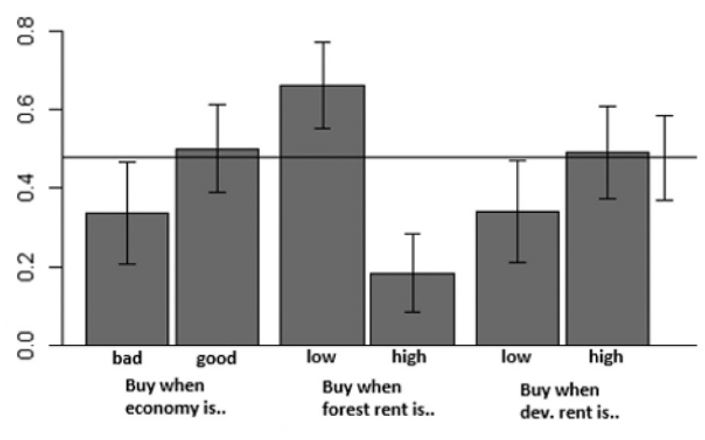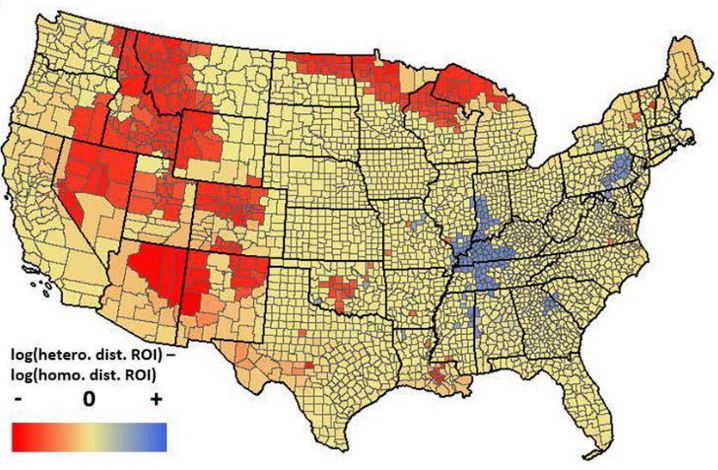Projects
Wealth Inequality and sustainable resource management
2022-current
Amid the escalating environmental crisis from the overuse of common-pool resources, local self-regulation in resource management is gaining traction. This community-based approach empowers local users to set rules for resource management and willingly monitor and penalize those who exploit resources unfairly. Although effective in many instances, self-regulation doesn't always ensure optimal use of common-pool resources. A potential determinant of self-regulation's success is the heterogeneity among community members, notably wealth inequality. In this project, I explore how wealth inequality impacts the management of common-pool resources within a self-regulating community. The voluntary sanctioning in these communities can be swayed by wealth distribution. As inequality grows, the affluent might have more motivation to penalize others. I have developed a game theoretic model for this investigation, where participants decide their contributions to resource management and sanction those not meeting the collective standard.
Freshwater fish and mussels and hydropower operation in the face of climate change
2021-current
The rapid shifts in thermal and flow regimes due to climate change can outpace the adaptation capabilities of freshwater species. This may force these species to migrate to areas with more favorable habitats. Beyond climate change, another significant disruptor to freshwater biodiversity is the operation of power plants, notably hydropower dams. Hydropower plants modulate river flow through scheduled discharges, affecting both temperature and flow in tailwaters. In this project, I examine the distributional changes of freshwater fish and mussel species under the dual pressures of climate change and hydropower operations across the coterminous United States (CONUS). Through ecological niche modeling, I project current and future distributions of these species, taking into account the influence of hydropower on river networks' thermal and flow regimes.
Additionally, I'll be assessing how these future biodiversity distribution shifts could influence hydropower operational costs. Environmental compliance aimed at biodiversity conservation comprises a significant chunk of the operational costs for hydropower facilities. I intend to perform an economic analysis to understand the cost implications arising from changes in environmental compliance due to altered biodiversity distributions.
Conservation Land Acquisition Planning
2019-2022
With limited funds for conservation, it's crucial to ensure conservation actions are effective and cost-efficient. For land acquisitions aiming to protect biodiversity and ecosystem services, the timing and location are vital for maximizing conservation impact with minimal cost.
I conducted two research projects on the spatial and temporal dynamics of land acquisition planning. First, I examined how different institutions, such as NGOs and government agencies, approach acquisitions in varied market environments. Land acquisitions made in different market environments differ on how much conservation benefit they provide, because the level of threat of development on a land change with the market condition. Using a dynamic numerical simulation, I modeled how acquisition patterns influence conservation outcomes in fluctuating markets. The findings revealed that organizations often achieve better conservation results when acquiring lands during market conditions like when returns from undeveloped land-use are low, when returns from developed land-use are high, or when the wider economy is doing well often yielded greater conservation benefits through land acquisitions (Figure 1).
Second, I explored the influence of ecological disturbance heterogeneity on acquisition priorities (Figure 2). Many existing models assume consistent ecological disturbances across space, overlooking the varied impacts of human development across regions. I measured the implications of this assumption by comparing conservation outcomes between models that use homogeneous versus heterogeneous ecological disturbance data. In a study focused on the coterminous United States, assuming consistent ecological disturbances resulted in a 76% decrease in potential conservation gains for a set budget.

Figure 1. Total conservation benefit of acquired lands using various acquisition patterns under a temporally fluctuating market environment. Horizontal line shows the baseline total conservation benefit created with random acquisition.

Figure 2. Difference in the return on investment of land acquisition between assuming spatially heterogeneous ecological disturbance and homogeneous ecological disturbance by counties.
Evolution of Segmented Viruses Under Negative Selection and Genetic Drift
2017-2019
In an asexual population where mutation rate is sufficiently high and purifying selection against deleterious mutations is not strong enough, the population increases in mutational load due to genetic drift, a mechanism known as Muller's rachet. However, with reciprocal genetic exchange between haploid genomes in a sexual reproduction, the effect of genetic drift on the speed of the ratchet can be reduced. RNA viruses are ideal for testing evolutionary hypotheses regarding the effect of sexual reproduction on Muller’s ratchet as they have either segmented or non-segmented RNA genome. With segmented genome, exchange of genetic materials may occur when two different virus strains coinfect the same host. In this project, I studied how segmented RNA that goes through reassortment could have evolved from more simple, non-segmented RNA. I simulated the competition between non-segmented and two-segmented haploid individuals under deleterious mutation-selection balance and genetic drift in different structures. I found that there are meta-population structures that provide ideal condition for segmented viruses to dominate the population through competitive exclusion (Figure 1).

Figure 1. Probability of segmented viruses to outcompete the unsegmented under different parameter values (left: starting frequency of segmented; right: rate of emergence of segmented viruses) in a panmictic population structure (red) and in a meta-population structure with 30 demes (black).



